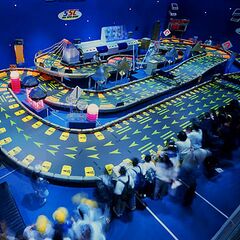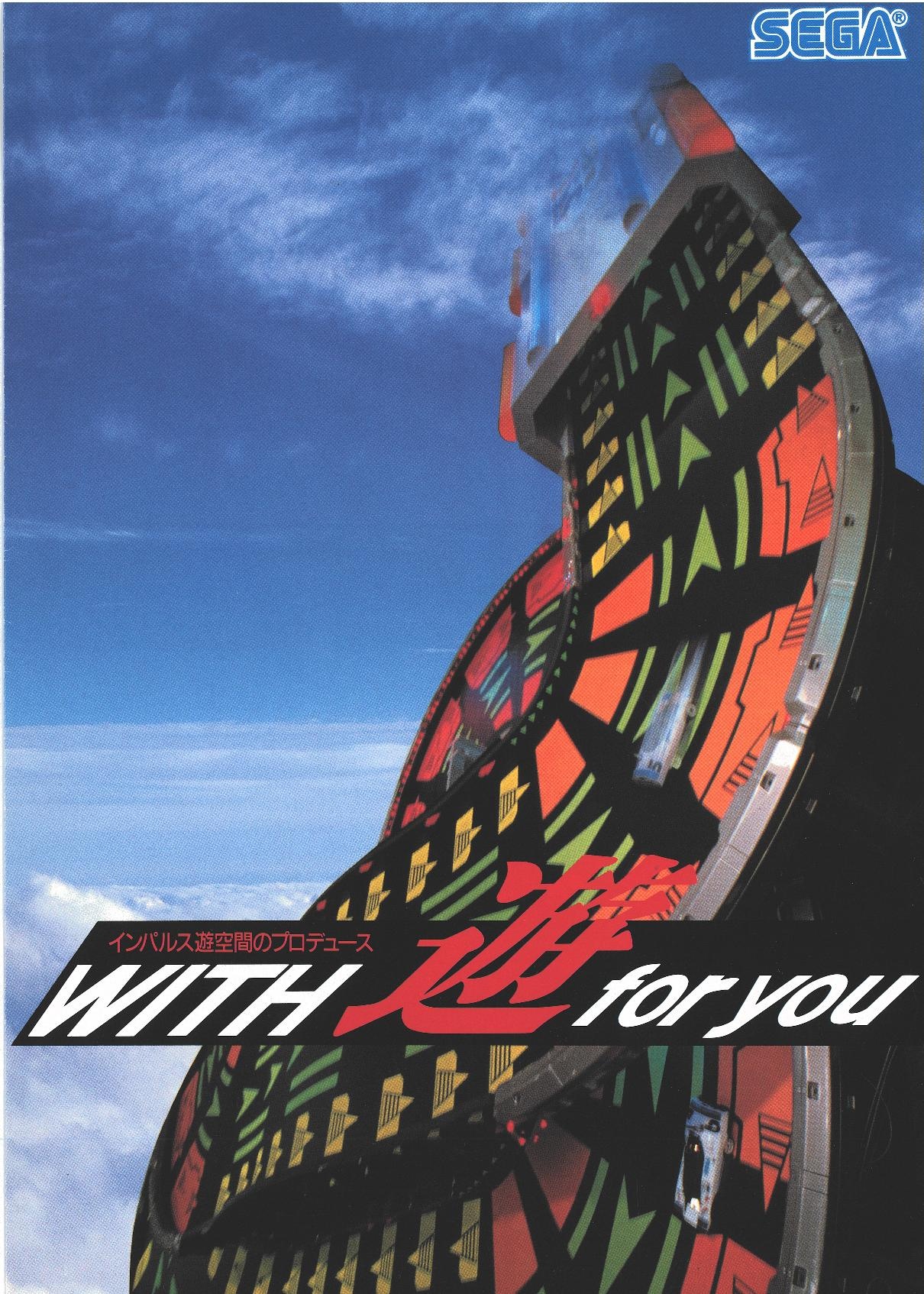Difference between revisions of "Sega Super Circuit"
From Sega Retro
(with more confirmed locations, may as well lump together in history section and then list off like other attraction pages) |
|||
| Line 12: | Line 12: | ||
}} | }} | ||
}} | }} | ||
| − | + | '''''{{PAGENAME}}''''' (セガスーパーサーキット) is a [[large attraction]] developed by [[Sega]]. Based on ''[[Mach Vision]]'', a previous joint venture from 1987 which appeared at [[Communication Carnival Yume Koujou '87]], the attraction was developed by personnel who would later become part of [[AM4]] and [[AM5]].{{magref|ssmjp|1996-09|144}} ''Sega Super Circuit'' was released at only a select few events and amusement centers that Sega had a hand in during the late 1980s and early 1990s, serving as a precursor to their later work on other large-scale interactive projects as part of the [[En-Joint]] and [[Amusement Theme Park]] facility concepts.{{magref|bemega|1994-10|96}} | |
==Gameplay== | ==Gameplay== | ||
| Line 45: | Line 45: | ||
==Promotional material== | ==Promotional material== | ||
| − | + | {{gallery | |
| − | SegaSuperCircut Arcade JP Flyer.pdf|Flyer | + | |{{gitem|SegaSuperCircut Arcade JP Flyer.pdf|Flyer}} |
| − | + | |{{galleryPrintAd|gamemachinejp|342|9}} | |
| + | }} | ||
==External links== | ==External links== | ||
Revision as of 21:24, 25 January 2022

| |||||||||
| Sega Super Circuit | |||||||||
|---|---|---|---|---|---|---|---|---|---|
| System(s): Large attraction | |||||||||
| Publisher: Sega | |||||||||
| Developer: Sega | |||||||||
| Genre: Racing | |||||||||
| Number of players: 2-6 | |||||||||
|
Sega Super Circuit (セガスーパーサーキット) is a large attraction developed by Sega. Based on Mach Vision, a previous joint venture from 1987 which appeared at Communication Carnival Yume Koujou '87, the attraction was developed by personnel who would later become part of AM4 and AM5.[2] Sega Super Circuit was released at only a select few events and amusement centers that Sega had a hand in during the late 1980s and early 1990s, serving as a precursor to their later work on other large-scale interactive projects as part of the En-Joint and Amusement Theme Park facility concepts.[3]
Contents
Gameplay
Sega Super Circuit is similar in design to the earlier Mach Vision, featuring radio controlled cars with mounted CCD cameras that relay their image to modified OutRun (deluxe) cabinets. Sega Super Circuit alters things by having a more elaborate track, a means of recording and displaying lap times, and up to five racers (versus four in Mach Vision). Aesthetics aside it is much the same game, with a human operator required at all times to both reset the race and unstick any cars that can't move.
Reportedly the track was 80m long and 1.5m wide.
Versions
Unlike the one-off Mach Vision, Sega Super Circuit was designed to be sold, with most iterations using the same track layout and at least five cars. Very few were actually made, however, all appearing at temporary events and a small number of Sega's new-style amusement centers between 1988 and 1991 in Japan.
Joy Square in Hamamatsu
Sega Super Circuit first made an appearance at Joy Square in Hamamatsu, opened July 1988.[4] The entertainment complex was created in a business alliance between Sega and three other companies from separate industries. The former provided its amusement produce, planning, and operations know-how that had been cultivated over the past several years through its successful game centers and taikan games, with the brand new Sega Super Circuit a central part of this.[5]
This original iteration had six cars, with the cabinets located behind the track on a level above. It is not known how long Sega Super Circuit was kept in operation at the venue, though Joy Square itself appears to have lasted into the 2000s.
Hi-Tech Sega Nagahama
With its initial appearance at the Joy Square venue a success, Sega Super Circuit's second appearance was as part of Hi-Tech Sega Nagahama, opened one month later in August on the site of the Seiyu Nagahama Rakuichi shopping district, which had previously launched during March.[6] Sega operated the center through a joint venture with Seiyu. Alongside the original Joy Square version, this installation also used a set of six cars and the full layout.[7]
Hi-Tech Sega Nagahama was later rebranded and reopened as Wonder Land in July 1990, at that time still featuring its Sega Super Circuit installation under joint management by Sega and Seiyu.[8] Its longevity at the venue after this point is unknown.
Amusement Machine Show 1988
Following its first two permanent installations at venues it had planned, Sega demonstrated a simplified version of Sega Super Circuit to potential buyers at Amusement Machine Show 1988.[9] As a result of the event's brief open period and the space available, this version featured only three cars, and a downsized L-shaped track with a bump.[10]
Yokohama Hakurankai
The most widely seen iteration of Sega Super Circuit later appeared as part of Yokohama Hakurankai, existing for six months between March and October 1989. This featured five cars and the full layout, with the OutRun cabinets being located on the left side of the circuit.
Sega World Tokyo Roof
A final iteration of the game existed at Sega World Tokyo Roof, which ran from September 1990 to June 1991. Like the original two installations, this version had six cars, with the cabinets located behind the track on a level above.
Magazine articles
- Main article: Sega Super Circuit/Magazine articles.
Promotional material
External links
References
- ↑ http://sega-mechatro.com/products-mt/1988/12/post_33.html (Wayback Machine: 2009-08-18 19:51)
- ↑ Sega Saturn Magazine, "1996-09 (1996-06-14)" (JP; 1996-05-24), page 144
- ↑ Beep! MegaDrive, "October 1994" (JP; 1994-09-08), page 96
- ↑ Game Machine, "1988-09-01" (JP; 1988-09-01), page 12
- ↑ File:SegaSuperCircut_Arcade_JP_Flyer.pdf, page 4
- ↑ File:SegaSuperCircut_Arcade_JP_Flyer.pdf, page 5
- ↑ Game Machine, "1988-10-01" (JP; 1988-10-01), page 3
- ↑ File:SegaEnJoint_JP_Flyer.pdf, page 12
- ↑ Game Machine, "1988-10-15" (JP; 1988-10-15), page 8
- ↑ Gamest, "December 1988" (JP; 1988-10-29), page 106



